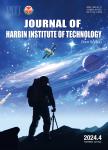Support Vector Regression for Bus Travel Time Prediction Using Wavelet Transform
Support Vector Regression for Bus Travel Time Prediction Using Wavelet Transform作者机构:School of Transportation Southeast University Nanjing 210096 China Guangzhou Urban Planning & Design Survey Research Institute Guangzhou 510060 China
出 版 物:《Journal of Harbin Institute of Technology(New Series)》 (哈尔滨工业大学学报(英文版))
年 卷 期:2019年第26卷第3期
页 面:26-34页
学科分类:08[工学] 0823[工学-交通运输工程]
基 金:Sponsored by the Projects of International Cooperation and Exchange of the National Natural Science Foundation of China(Grant No.51561135003) the Scientific Research Foundation of Graduated School of Southeast University(Grant No.YBJJ1842)
主 题:intelligent transportation bus travel time prediction wavelet transform support vector regression hybrid model
摘 要:In order to accurately predict bus travel time, a hybrid model based on combining wavelet transform technique with support vector regression(WT-SVR) model is employed. In this model, wavelet decomposition is used to extract important information of data at different levels and enhances the forecasting ability of the model. After wavelet transform different components are forecasted by their corresponding SVR predictors. The final prediction result is obtained by the summation of the predicted results for each component. The proposed hybrid model is examined by the data of bus route No.550 in Nanjing, China. The performance of WT-SVR model is evaluated by mean absolute error(MAE), mean absolute percent error(MAPE) and relative mean square error(RMSE), and also compared to regular SVR and ANN models. The results show that the prediction method based on wavelet transform and SVR has better tracking ability and dynamic behavior than regular SVR and ANN models. The forecasting performance is remarkably improved to obtain within 6% MAPE for testing section Ⅰ and 8% MAPE for testing section Ⅱ, which proves that the suggested approach is feasible and applicable in bus travel time prediction.



